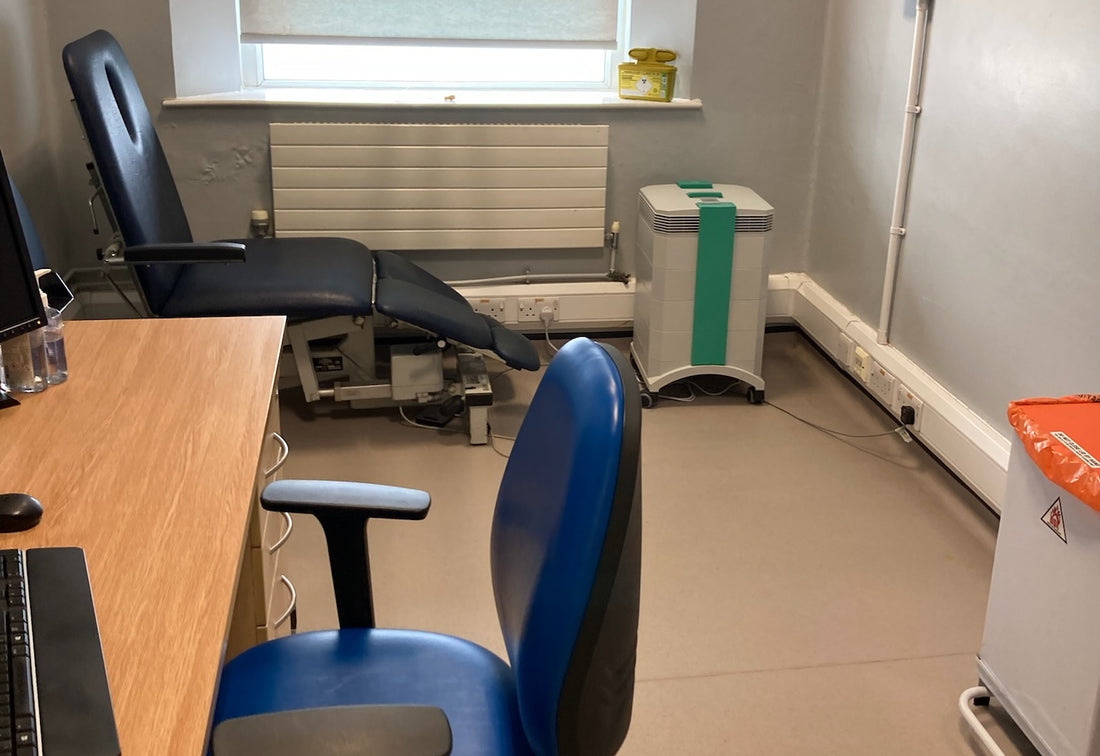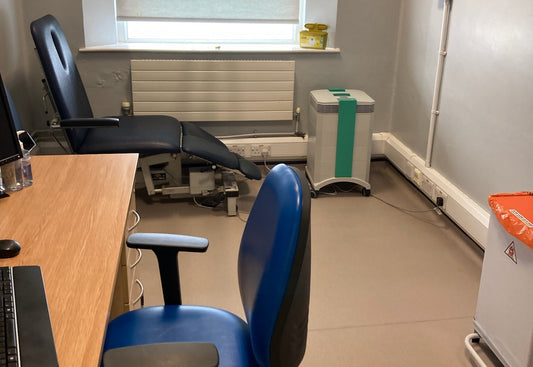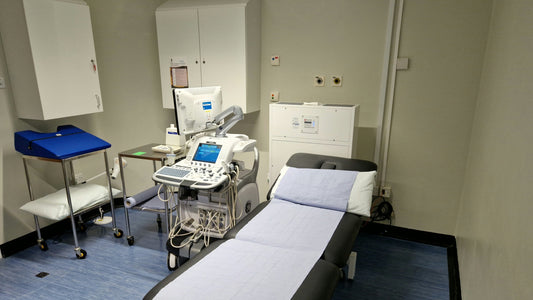Air quality is a crucial factor in maintaining a healthy environment in hospitals. Poor air quality can lead to the spread of infections and diseases, particularly in vulnerable patients. The COVID-19 pandemic has further highlighted the importance of ventilation and air filtration in healthcare settings.
To ensure hospitals and other healthcare settings have the right specifications and standards in place when selecting an environmental air filtration solution, new NHS guidelines have been put in place. The guidelines include recommendations on the following:1
- Use of local HEPA filter-based air cleaners; classified at BS EN 1822-1 or ISO 29463-1, with a recommended filter efficacy of 99.95% (H13 filter) or 99.995% (H14 filter)
- On-site validation that unfiltered air is not bypassing the filters of the device
- Mandatory training for clinical and nursing staff on how to manage, maintain and safely use the devices
As we mentioned in our previous article, we welcome this much-needed guidance, but as we start to apply this guidance in real life, there are a few things we need to take into consideration. The first of which was the application of not just H13 and even less so H14, but also the consideration of H11 filters, especially in noise sensitive environments - click here to find out more: Why H11 can be better than H13
In this article, we look at the validation process of the HEPA filter based air cleaners.
To ensure that the filtration unit is fit for purpose, the guidance states that the filtration efficiency - and more specifically a lack of leakage in the system - needs to be validated at the site; on first installation, at every filter change and when moved to a different location.1 This type of verification test is suggested to be done by measurements of pressure drop across the filter. However, as we put this guidance into practice, measuring the pressure drop of a HEPA filtered device comes into question - especially if this is being done to validate the lack of leakage in the a unit.
An air change is how many times the air in a given room is cleaned; it is a basic measure of the volume of air that is filtered by the HEPA filtered device. The number of air changes per hour (ACH) required in a hospital depends on the room's use, for example, surgical rooms require 20 ACH, emergency rooms require 12 ACH, patient rooms require 6 ACH and operating theatres 22 ACH.2
The main objective of ventilation systems is to decrease the presence of microorganisms within the environment. Therefore, instead of validating filtration units purely based on the filtration efficiency of its filters, and the number of air changes it achieves in a given room, it would be more effective to shift our focus towards evaluating the actual reduction of level of contamination in the room in question.
This approach to airborne infection control is applied in clean rooms, which are environments where the concentration of airborne contaminants is controlled according to specific ISO guidelines that specify the permissible number, type, and size of particles. Each ISO class has ten times fewer particles than the class above it. For example, a Class 8 cleanroom can have 100,000 particles per square foot of air, while a Class 7 cleanroom can only have 10,000.3
Particle counters and photometers are devices used to measure particles in the air. These can be highly sensitive devices that count and size particles in the air, that are easy to use and can be adjusted to the allowable threshold of particle sizes.4 Gone are the days when particle counters were expensive to buy and calibrate, we can now purchase handheld laser particle counters that are inexpensive, accurate, and easy to use in hospital settings.
Furthermore, the pandemic has shown that we can maintain a safe level of viruses in our environments and that a complete 100% reduction of viruses is not necessary. Studies have shown that reducing the viral load in a room by 50% can significantly reduce the risk of infection.
Therefore, similar to cleanrooms, we should enforce comparable standards and safe work exposure limits for different hospital environments. Once these standards are set, we can then look at what units actually achieve the best results in regard to reduction of contamination levels at an appropriate sound pressure level.
We understand the complexities of providing clean air to sensitive areas. We work within the NHS guidelines and with Infection Control Teams and Facilities Managers to specify the optimum installation for each healthcare environment. For more information, please call 0203 176 0524 or email us at info@CommercialAirFiltration.co.uk.
Reference:
- NHS: NHS Estates Technical Bulletin (NETB 2023/01A): application of HEPA filter devices for air cleaning in healthcare spaces: guidance and standards. Available at: https://www.england.nhs.uk/long-read/application-of-hepa-filter-devices-for-air-cleaning-in-healthcare-spaces-guidance-and-standards/#executive-summary. Last accessed: November 2023.
- NHS: (HTM 03-01) Specialised ventilation for healthcare buildings. Available at: https://www.england.nhs.uk/publication/specialised-ventilation-for-healthcare-buildings/. Last accessed: November 2023.
- Monmouth Scientific. How Is A Cleanroom's Cleanliness Measured? Available at: https://monmouthscientific.co.uk/how-is-a-cleanrooms-cleanliness-measured/#:~:text=How%20is%20a%20Cleanroom's%20cleanliness,permitted%20per%20volume%20of%20air. Last accessed: November 2023.
- Clean Room Technology. Five fundamentals of particle counters. Available at: https://cleanroomtechnology.com/news/article_page/Five_fundamentals_of_particle_counters/179565. Last accessed: November 2023.




